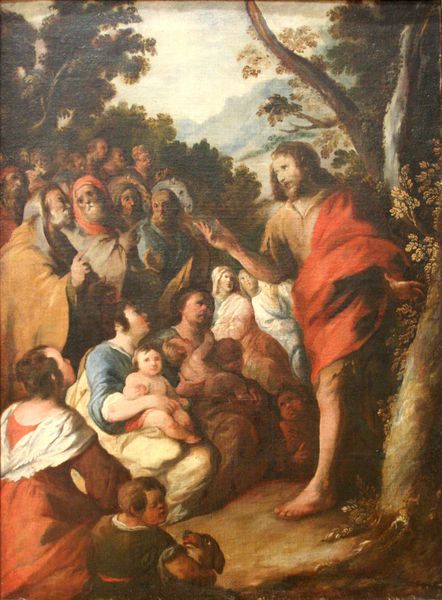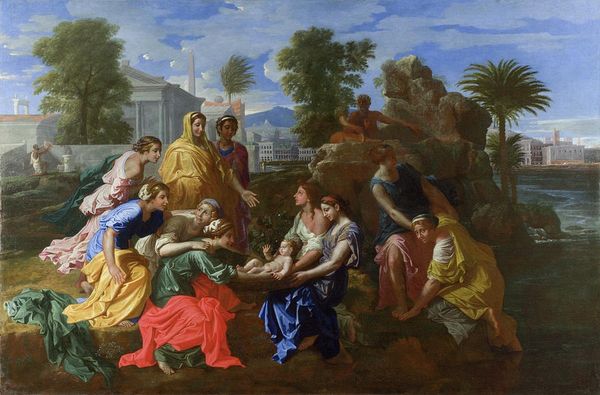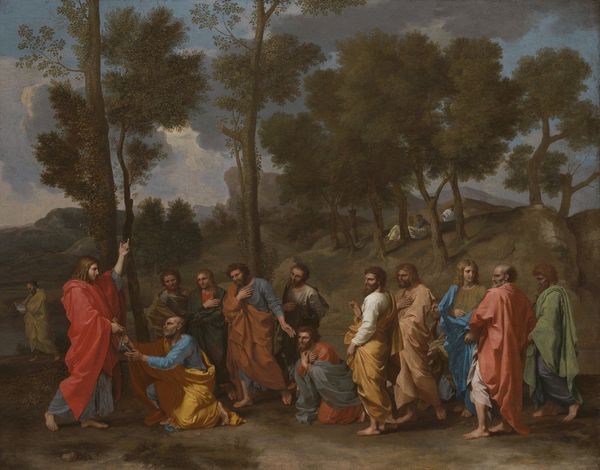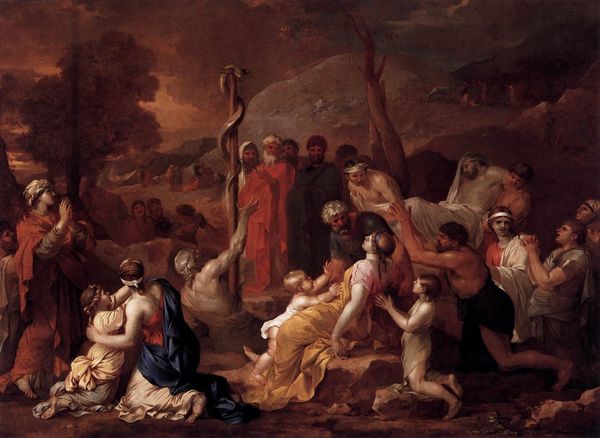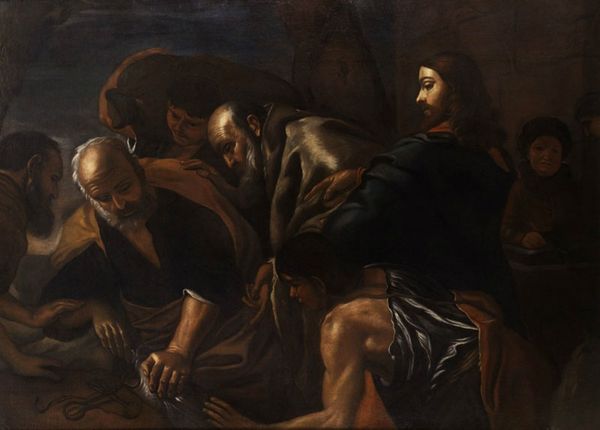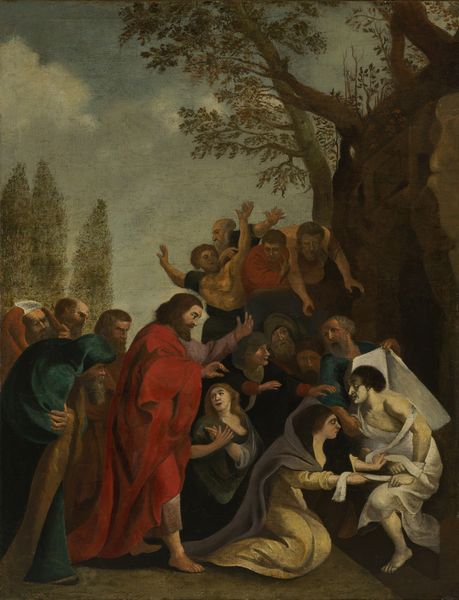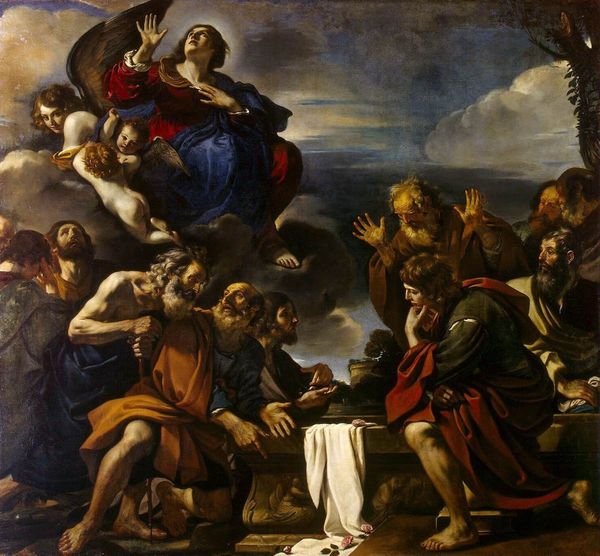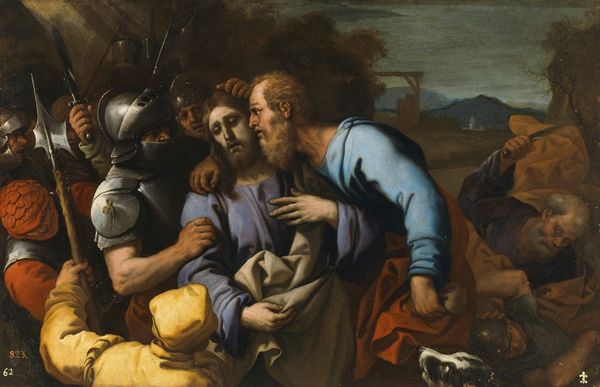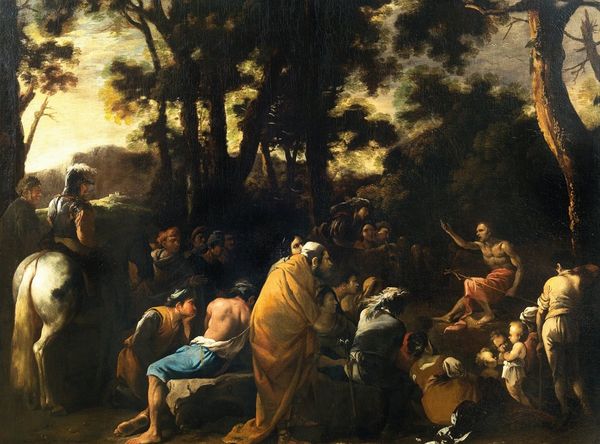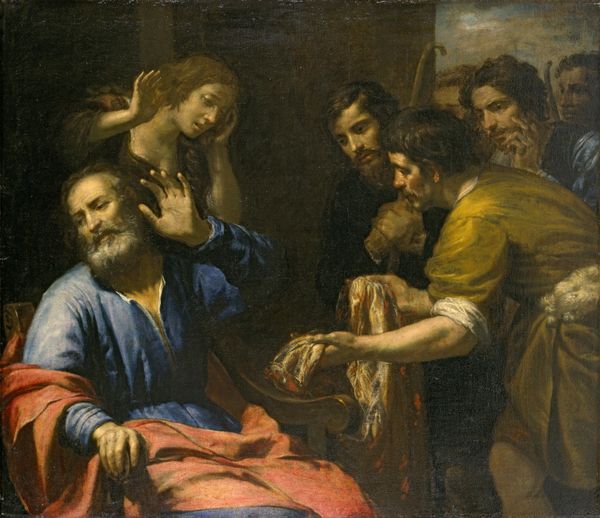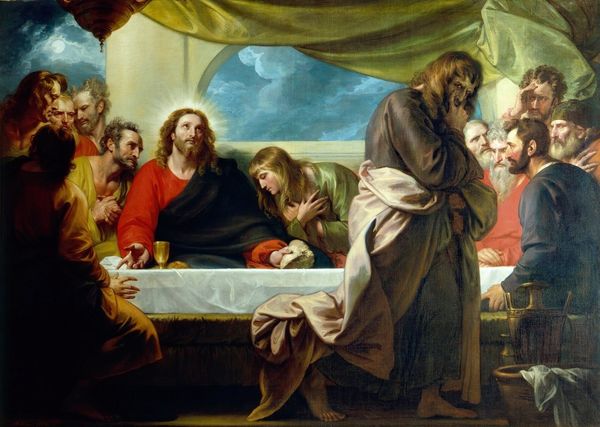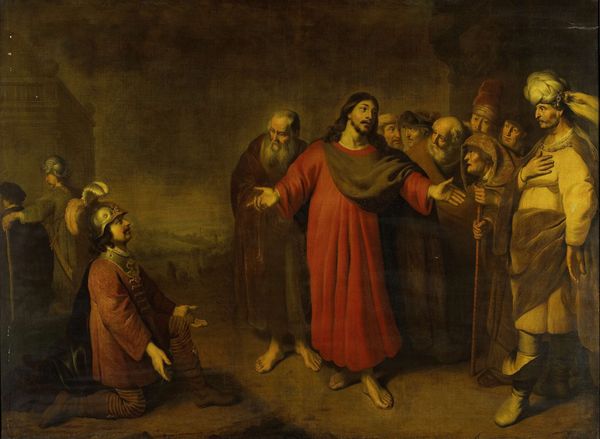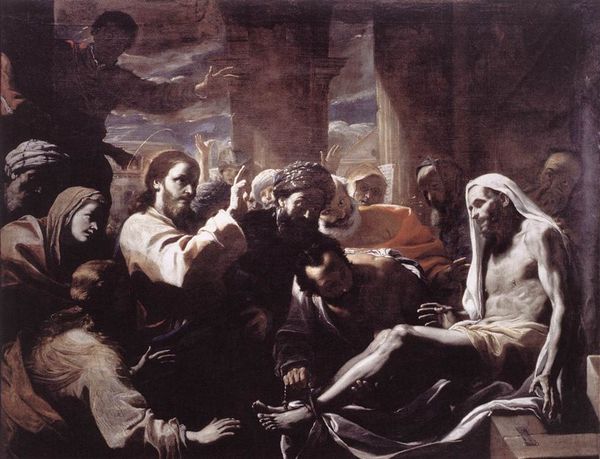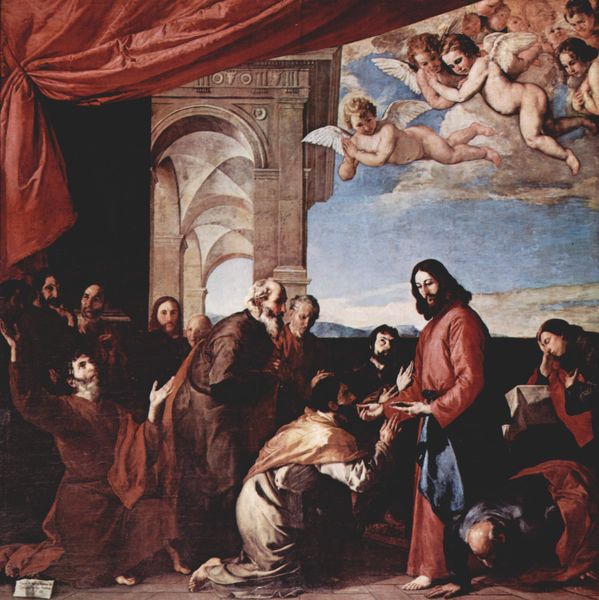
oil-paint
narrative-art
baroque
oil-paint
landscape
figuration
oil painting
history-painting
Copyright: Public domain
Curator: Let's discuss this rendition of The Multiplication of Loaves and Fishes, attributed to Francisco Herrera and housed here at the Real Academia de Bellas Artes de San Fernando in Madrid. Editor: Immediately, I’m struck by the scale and sense of drama! The chiaroscuro effect pulls my eye toward the central figures while creating an overwhelming sense of the multitude. The use of a restricted earth-tone palette with muted shadows truly enhances that drama. Curator: Baroque artists such as Herrera often used religious narratives as opportunities to engage viewers, fostering connections with prevailing socio-political norms of the time. Here, Christ's divine provision resonates deeply in a historical context marked by social disparities and challenges. Consider the immense power that religious institutions wielded and their roles in addressing public welfare. Editor: Indeed. Formally, the artist stages the scene to direct our gaze right at Christ; notice the strategic use of light. And also consider how the crowd extends seemingly infinitely in the background, reinforcing the idea of a miracle unfolding on a grand, almost incomprehensible scale. There is also something striking about the limited palette: everything resolves to the composition and disposition of bodies. Curator: It’s worth considering that depictions of the Feeding of the Five Thousand served not only as representations of faith but also subtly conveyed a sense of social responsibility. Religious art from this period reflects this sentiment across a broader scope. Artists are producing works with overt sociopolitical significance, as dictated by patrons. Editor: To add to that: if we closely inspect each figure and his position to one another, we notice a particular emphasis being put on the immediate followers and, perhaps more precisely, the exchange between them and Jesus. I'd venture to say the disciples at Christ's left all appear to be engaging with each other and directing their gazes to Jesus, indicating not only proximity but the dynamic nature of a relationship with him. Curator: I see this art playing an important part in societal conversations of the time, not merely for artistic virtue, but for active community dialogue and social reformation through artwork representation and message. Editor: Ultimately, regardless of any overt message that the patron has paid for, it remains that the strength of the painting lies within the careful manipulation of elements like composition, light, and the arrangement of bodies that allow such rich narratives to resonate and propagate meaning far beyond its socio-historic origins.
Comments
No comments
Be the first to comment and join the conversation on the ultimate creative platform.
